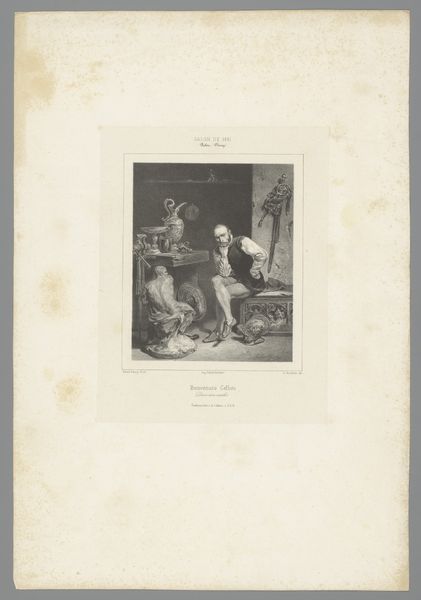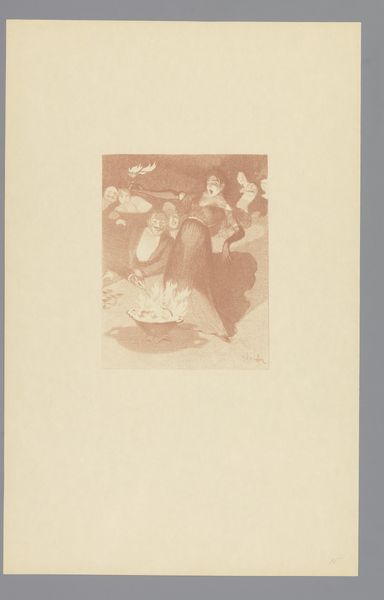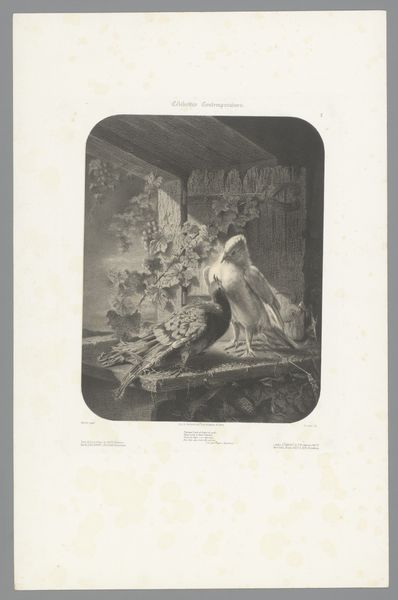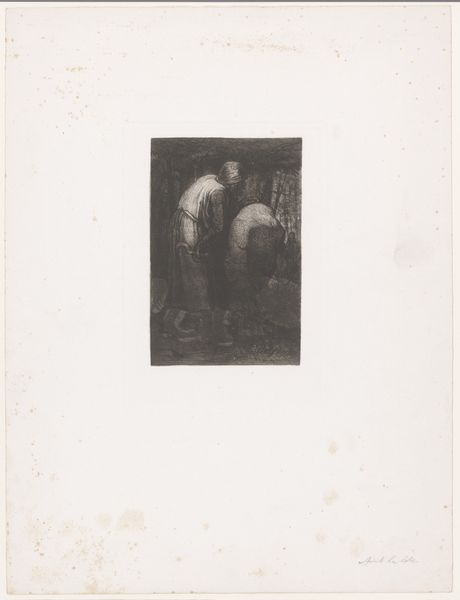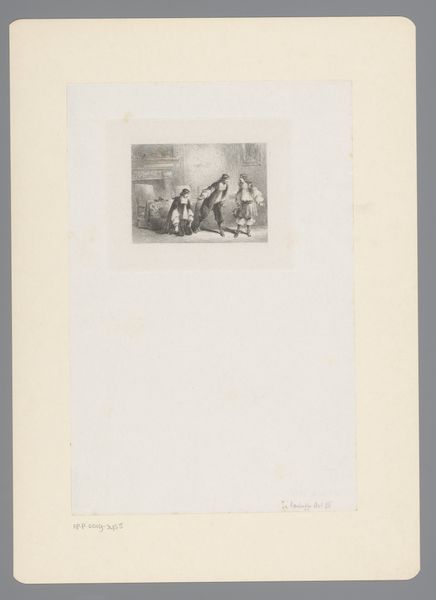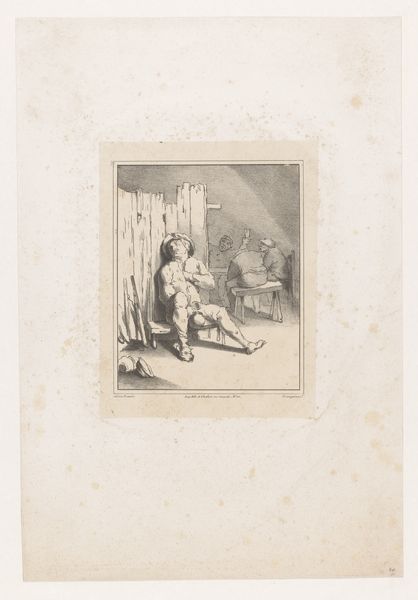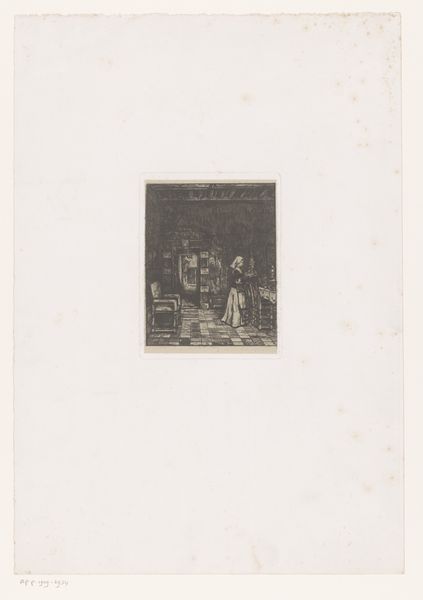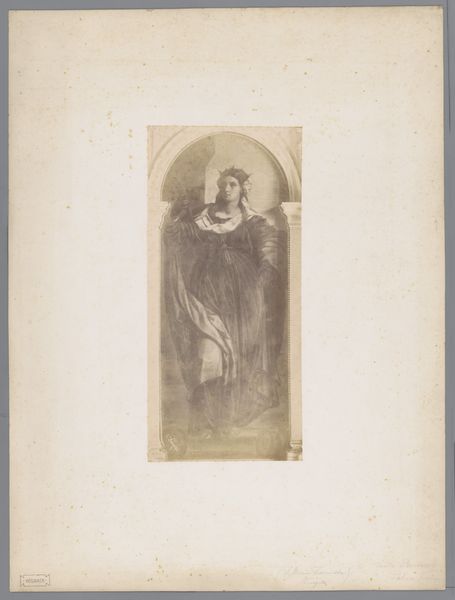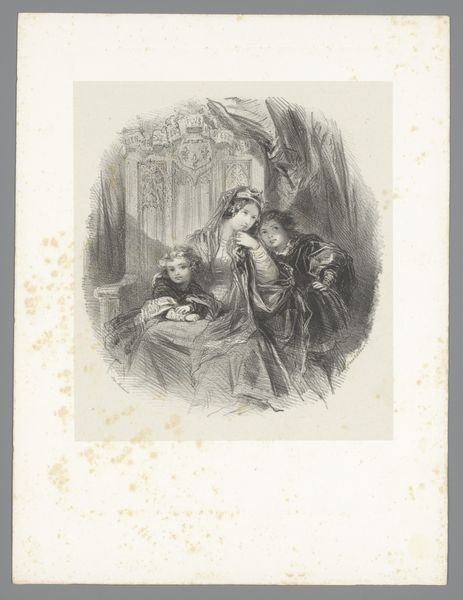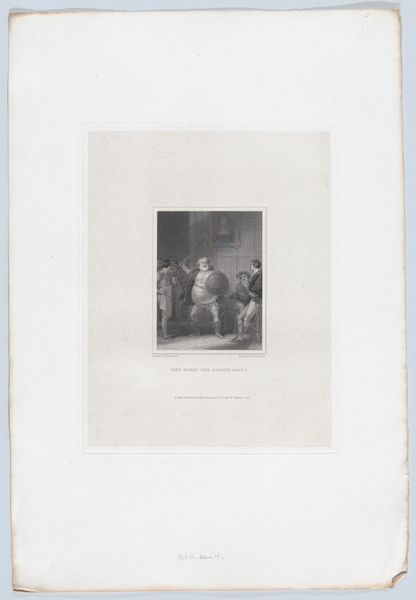
Dimensions: height 445 mm, width 306 mm
Copyright: Rijks Museum: Open Domain
Curator: Here in Gallery 24, we find Adolphe Mouilleron’s engraving, "Kleine kunstliefhebbers," translating to "Little Art Lovers," which he created between 1851 and 1862. Editor: My immediate response is charmed amusement! There’s an almost sculptural quality in how the light plays on their bodies. The texture captured within the etching marks really brings out their cherubic softness. Curator: Absolutely. The romanticist style is evident in the idealized, sentimental depiction. Genre-painting subjects like this, focused on scenes of everyday life, gained popularity during this period as a reflection of middle-class values. This work, held at the Rijksmuseum, offers a glimpse into the art world through innocent eyes, revealing a sense of play. Editor: Observe how the forms cluster in the right quadrant. This directs the eye to trace over the canvas which serves as an almost mirror or secondary subject. We can even infer that it may actually be a mirror if not an open window of sort. Mouilleron clearly exploits contrasts, opposing light skin and drapery to dark skin and studio decor to maximize optical tensions and emphasize light. Curator: What strikes me is how Mouilleron uses the imagery of children to soften the often rigorous and formal atmosphere of the art world. They become stand-ins for a broader public engaging with art and a time where notions such as public museums emerged and notions such as the art world changed dramatically as access shifted more radically in Europe at that time. Editor: That is an intriguing parallel. It presents children as blank canvases, if you will, innocent receptacles primed to interpret and create narratives for the pieces themselves. One could say they are free of the theoretical frameworks that determine aesthetic engagement in academic art settings. Curator: Exactly. Through a print, which allows for broader circulation than an oil on canvas might, and its narrative-driven composition, "Kleine kunstliefhebbers" becomes more than a cute scene; it symbolizes the accessibility and universal appeal of art that museums wanted to advocate. Editor: And it's not just about consumption, it's also about production. The one cherub is pictured creating their own strokes on a larger painting. It’s compelling how an artistic eye in turn generates and anticipates future artistic appreciation. This composition also cleverly encapsulates and highlights this transformative dynamic and notion of artistic futurity. Curator: Indeed, Mouilleron's work speaks volumes about the historical moment in which it was created, subtly conveying shifts in societal perception of art and childhood. Editor: Precisely, while my formalist inclination allows me to consider its visual power within light, form, and tone. It’s a work full of potential meanings that transcend pure description.
Comments
No comments
Be the first to comment and join the conversation on the ultimate creative platform.
